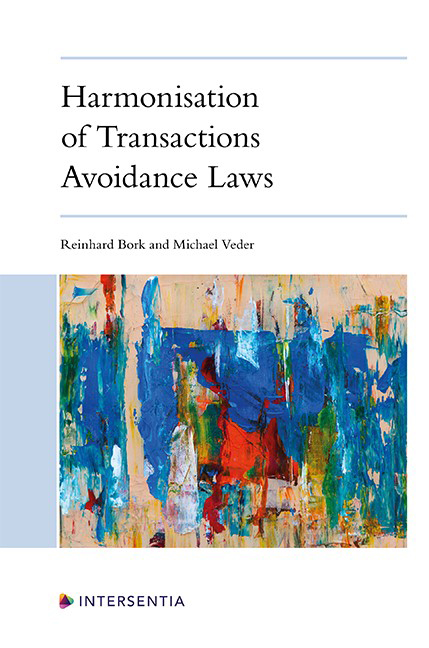Finland
Published online by Cambridge University Press: 26 May 2022
Summary
A. INSOLVENCY LAW OF FINLAND
The roots of the Finnish law governing the transactions avoidance can be traced back to the Bankruptcy Regulation (9.11.1868). Due to the many challenges in the efforts to achieve a total reform of the bankruptcy legislation, the avoidance provisions were revised and modernised by a separate Act on the Recovery of Assets to the Bankruptcy Estates (758/1991, hereinafter ReAct), which is also applicable in corporate restructuring, enforcement of individual claims, and in the debt adjustment of private persons. While interpreting Finnish law, it is advisable to note that the basic principles, as well as the substantive preconditions for avoidance are, in Finland, subject to some exceptions, similar to the Swedish Bankruptcy Act (1987:672), chapter 4. Therefore, the draftworks of Swedish law, the rulings of the Supreme Court of Sweden, and the doctrine based on Swedish legal literature need to be taken into consideration when interpreting the content of the law of Finland. This is also the reason for the citations to Swedish legal literature in this impact assessment.
Regarding the procedure and litigation over the disputes of avoidance, there are special provisions in the Finnish legislation, see Restructuring of Enterprises Act (47/1993, hereinafter ResEntAct), Enforcement Code (705/2007) and Act on the Adjustment of the Debts of a Private Individual (57/1993, hereinafter DAA). Naturally, the Bankruptcy Act of Finland (120/2004, hereinafter BAF), as well as the Code of Judicial Procedure (4/1734, with many amendments) are of great importance for the entirety of the rules and principles of transactions avoidance law.
As to the principles explored (and the principle-oriented approach applied) in the study that led to the proposed Model Law (hereinafter the “Study” or the “Survey), the fundamental principles are the same that have affected, and constantly affect, the transactions avoidance law of Finland. It deserves to be mentioned here, as we can also see from the Survey, that two of those principles might be described as the leading ones: the principle of (securing the) equality of creditors; and the principle of maximising the satisfaction of the creditors’ claims (the principle of satisfaction). Thus, the implementation of the Model Law, partly or totally, would not require any kind of reconsideration of the fundamental principles behind the Finnish law.
- Type
- Chapter
- Information
- Harmonisation of Transactions Avoidance Laws , pp. 367 - 380Publisher: IntersentiaPrint publication year: 2022



